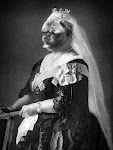Appropriate fare for a concert close to Earth Day, the Kansas City Symphony, under the direction of Music Director Michael Stern, performed 3 works dramatizing the creation of our terrestrial orb. Franz Joseph Haydn's "The Representation of Chaos" from his oratorio "The Creation" opened the program. Darius Milhaud's jazz drenched "La Création du Monde" (The Creation of the World) followed. The first half ended in spectacular fashion with the US premiere of Avner Dorman's "Frozen in Time" Concerto for Percussion and Orchestra, which the composer describes as "an imaginary snapshot of the Earth's geological developments from prehistoric times to the present day. Austrian percussionist Martin Grubinger was soloist. Earthy and elemental in its own right, Dvorák's lively Symphony # 8 comprised the concluding half.
Haydn's "Representation of Chaos" was a most innovative piece for its time. In an era where musical compositions were held to strict form and harmonic relationships, Haydn's diffuse overture seems to have themes, phrases and harmonies shifting to and fro as if in a primordial soup. Structurally, however,it is a fairly tight sonata form. Haydn invokes his "chaos" by avoiding cadences as much as possible and allowing ends of phrases to fade into the texture, foreshadowing Tristan and Isolde many years later. Stern led the reduced orchestra in a leisurely, appropriately meandering performance. Some iffy string intonation at the beginning marred the performance somewhat as the small orchestra left many parts exposed.
French composer Darius Milhaud, like many European composers in the 20's (Stravinsky comes to mind of course), became influenced by jazz. While many copied the almost orchestral bands such as Paul Whiteman, Milhaud's influence was in the small clubs of Harlem, where few white people ventured. When called upon to write a ballet in 1923, Milhaud used this inspiration for "La Création Du Monde", a setting of African creation stories. The small 18 member ensemble (two flutes, oboe, two clarinets, alto saxophone, bassoon, horn, two trumpets, trombone, timpani, percussion, piano, 2 violins, cello and bass) dug into the jazzy score with often appropriately raucous relish, yet frequently relaxed to allow us to savor the colorful details and lovely melodic lines.
Paraphrasing the slogan for Jiffy Pop popcorn from the 1960's, Avner Dorman's "Frozen In Time" Concerto for Percussion and orchestra is as much fun to watch as it is to hear.
An amalgam of earth music ranging from ancient African to jazz and rock, "Frozen In Time" has an elaborately staged but never pretentious program. The first movement "Indoafrica" is based on Indian classical rhythmic cycles and scales. The huge battery of drums transports the music to rhythmic Africa while the marimba and mallets represent the more melodic Indian tradition. "Eurasia", a slower central movement, is laced with elements of European and Central Asian traditions. The ghost of Mozart appears as does the Italian Siciliana and some frosty Nordic chords and sounds. The orchestra strings predominate, underpinning the metallic percussion. Haunting and delicate in contrast to the more frenetic outer movements, "Eurasia" would be satisfying as a stand alone piece. "The Americas", with everything from Cuban dance to Broadway swing, brings the whole work to a most rousing conclusion. Snippets of the "Indoafrican" and "Eurasian" music weave in to remind us we are but one Earth.
The huge orchestra has plenty to do and is surely an integral part of the work, but the show is all the solo's. Martin Grubinger, who premiered the piece and has played all over the world now, is simply indescribable. Lean as an athlete and full of enthusiastic energy, he is fully in command of the work and the percussion. I do hope he records the piece sometime, but only if video is provided. His encore, (my lousy hearing did not let me catch what he was playing, but it seemed to be an Austrian hymn or lullaby of some sort), was the epitome of subtlety. Played on the marimba, often on the threshold of audibility, it left the audience breathless. Both Grubinger and the work received a rapturous ovation that most composers and performers only dream about. Sadly, the composer was not able to be at the performance but he can be assured that Kansas City certainly has many Avner Dorman fans after last night.
Sometimes, after such an overwhelming experience, the final work on the program can seem like an after thought or a fluffy dessert at best. In this case Stern and the orchestra gave a rousing and exquisitely detailed performance of Dvorák's masterpiece. From the delicate opening bars of the introduction through the dancing conclusion of the finale's coda (the various tempo shifts cleanly shaped and accented without jarring, Stern and the orchestra superbly negotiated the score's sweep and flow. Wonderful solos from the always fine KCS winds contributed to this fine and well received performance.
Saturday, April 30, 2011
Subscribe to:
Post Comments (Atom)



No comments:
Post a Comment